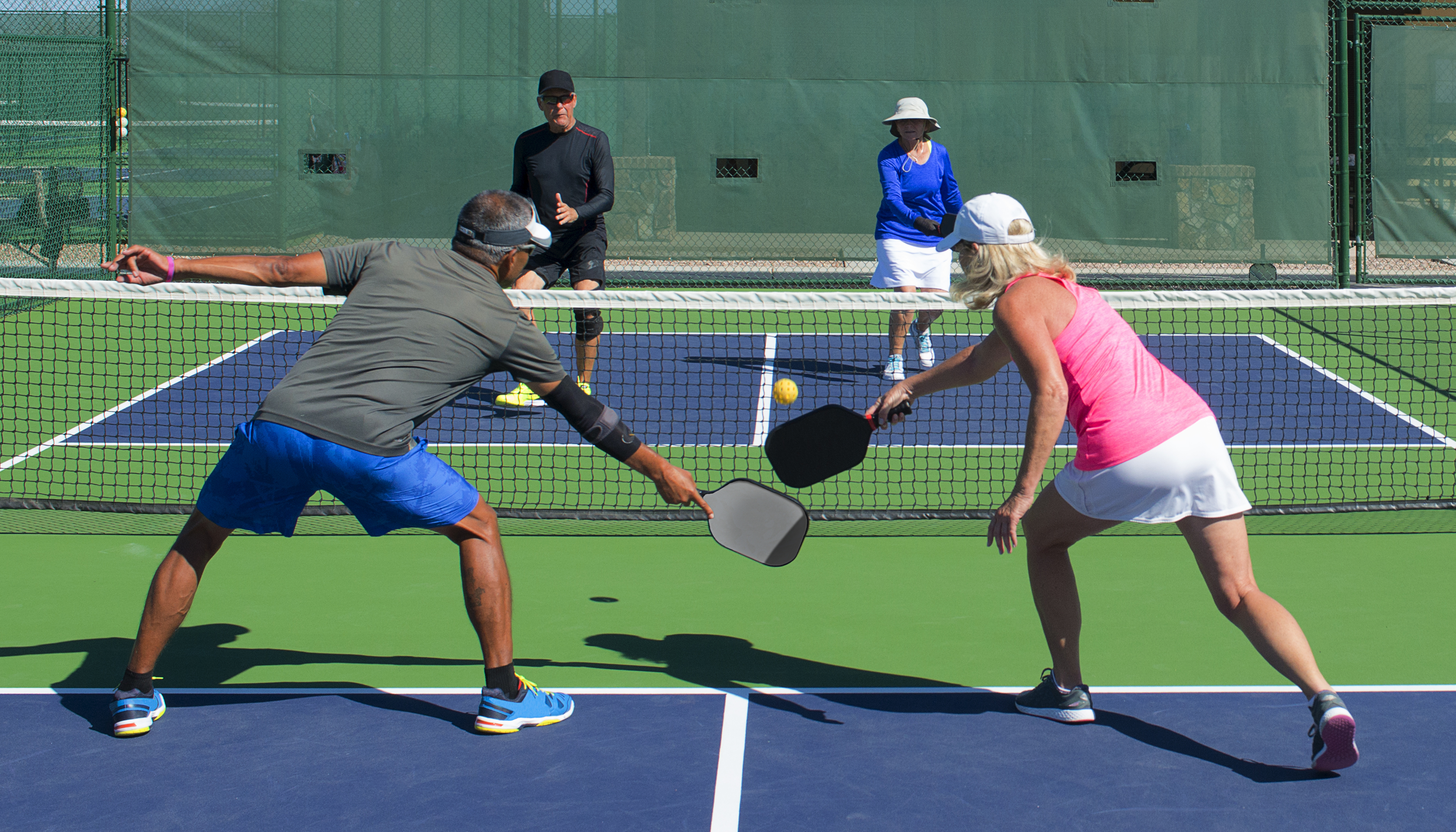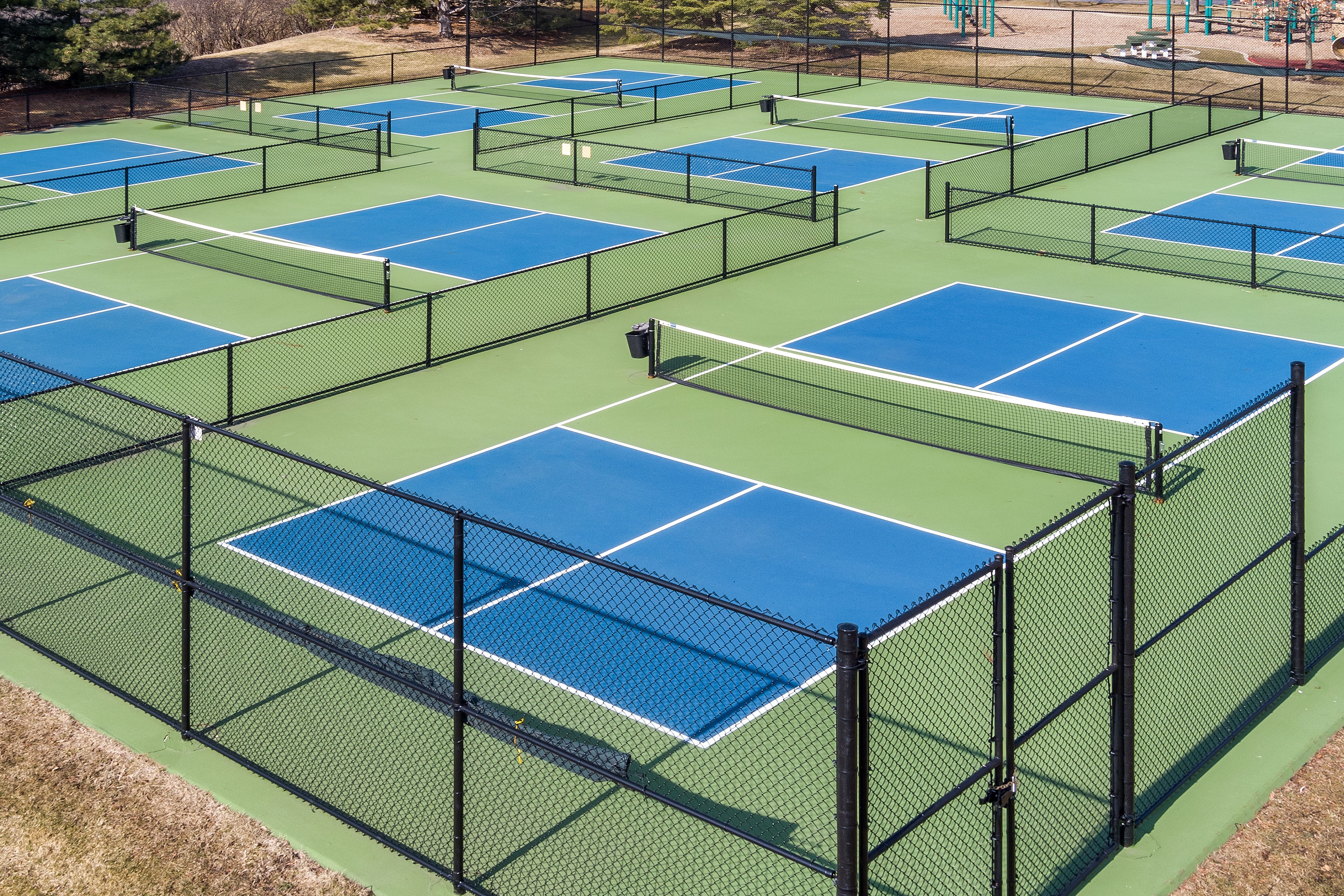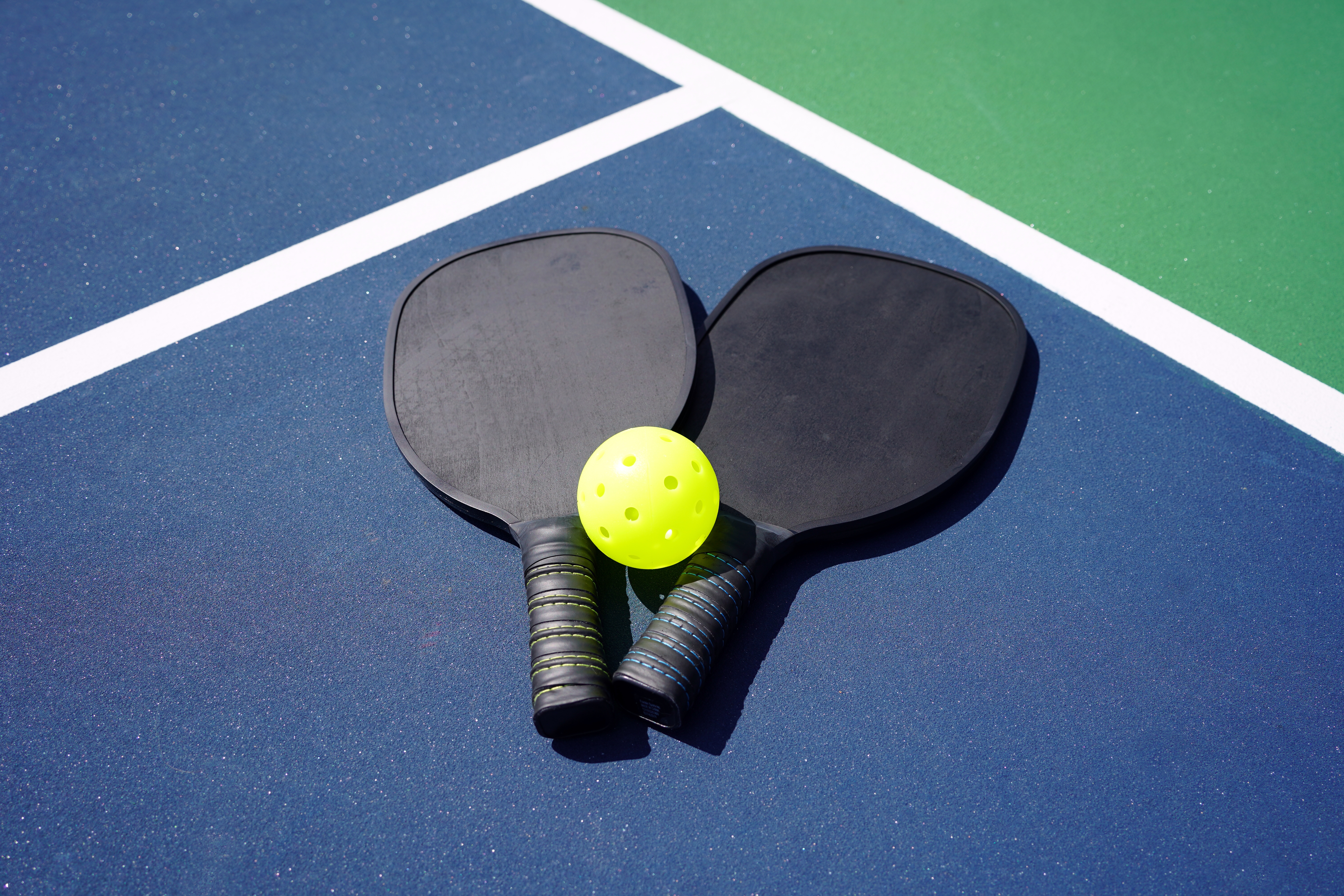Pickleball is a lively sport that resembles a smaller version of tennis. The players use rackets, often called paddles, to hit a ball back and forth over a net in the middle of the court. Pickleball is played on a badminton-sized court. It can be played indoors or outdoors. Players score points by hitting the ball in such a way that their opponent or opponents cannot return it. In a singles match, players compete one-on-one. Doubles matches are played in teams of two. 
Equipment
Equipment for pickleball consists of a court, a net, paddles, and a ball. Players can purchase the net, paddles, and ball in a set.
Court and net.
There are permanent pickleball courts in many parks and sports clubs. Pickleball can also be set up temporarily on tennis courts, with tape marking the different lines. The court is 20 feet (6 meters) wide and 44 feet (13 meters) long. The net, which is suspended by two posts, measures 34 inches (86 centimeters) high and runs through the center of the court. On either side of the net is a 7-foot (2-meter) rectangle called the non-volley zone or the kitchen. The playing space beyond the kitchen is divided in half to establish right and left service areas. 
Pickleball paddles
vary in material, size, and weight. The paddles are smaller than a tennis racket but larger than paddles used for table tennis. Pickleball paddle cores are made of aluminum and polymer materials. The hitting surface is made up of carbon fiber, composite, graphite, or hybrid materials. The paddles can be any color. 
The ball
is round and hollow and made of molded plastic. Indoor balls are lighter and have 26 holes in their surface. Outdoor balls are made of heavier material and have 40 holes. The ball measures 2.9 inches (7.4 centimeters) in diameter and weighs 0.78 to 0.93 ounces (22 to 26 grams). Pickleball balls can be any color, but they are most often yellow.
Play
Pickleball players toss a coin or play rock paper scissors to determine who serves first. The server stands on the right side of the court behind the baseline, the line farthest from the net.
To serve, the player drops the ball with one hand and hits it with an underhand swing with the paddle. The server must hit the ball below waist level. The server aims the ball across the court to the service area diagonally opposite. The ball must bounce in this area. A fault occurs during serving if the ball lands out of bounds, lands in the wrong service area, hits the net, or lands in the kitchen.
To return the serve, a player must hit the ball after one bounce so that it clears the net and bounces on the opponent’s court. A ball contacting any line is considered in play unless it hits the kitchen line on a serve. Volleying (hitting the ball before it bounces) is not allowed until both sides have successfully hit the ball after one bounce.
Players continue to rally (hit the ball back and forth) until one side fails to return the ball after one bounce, hits it off the court, or hits it into the net. Players can step into the kitchen if the ball bounces in that section, but volleying is never allowed there.
Only the serving player or team can score points. Players gain one point for winning a rally. In singles games, the score is kept with two numbers: the serving team’s score and receiving team’s score. The server continues serving until losing a rally or making a fault. The serve then switches to the receiving player.
In doubles games, the score is kept using three numbers: the serving team’s score, the receiving team’s score, and the server number. If a player is the first on the team to serve, the server number is one. If the player is the second player to serve on the team, the server number is two. If the serving team wins a point, the players switch service sides. The receiving team does not switch sides. The server will continue serving until the team loses a rally. When the first server loses a rally, the second server begins serving from his or her current position. If the receiving team wins the rally during the second server’s turn, neither team switches sides in the service area and the receiving team begins serving. This is called a side out.
On the first serve of the first game only, the server starts as a second server to ensure the first serving team does not have an advantage. After the serving team faults, the receiving team begins serving. That team then serves until both players lose a rally or fault while serving.
The player or team that first scores 11 points wins the game. However, the winner must have at least a two-point lead. Some tournament games are played to 15 or 21 points. If the players are playing to the best two games out of three, the players change ends after each game.
History
Pickleball was invented by the United States politician Joel Pritchard. He devised the game at his home in Bainbridge Island, Washington, in 1965 to entertain his children. The game is a combination of badminton, table tennis, and tennis. Pritchard worked on the game with the American businessman Bill Bell and entrepreneur Barney McCallum. Pritchard’s wife, Joan, named the game after the “pickle boat” in crew, also called rowing, which is filled with rowers who do not get picked for other boats. The name served to emphasize the game’s relaxed, informal roots.
In 1984, the United States Amateur Pickleball Association (USAPA) was founded. That same year, the first pickleball rulebook was published. In 2005, the USA Pickleball Association was formed, now called USA Pickleball. The USAPA established the International Federation of Pickleball, now called the International Pickleball Federation (IPF), in 2010 to spread the sport around the world. Pickleball is a popular form of recreation and an international sport. More than 60 countries belong to the IPF, which holds the annual Bainbridge Cup tournament. USA Pickleball sponsors national tournaments, including national championships and indoor national championships.
The sport of pickleball has grown rapidly in popularity. Players with a diversity of athletic abilities can participate. Players can make use of courts constructed for other sports. Pickleball became a popular pastime during the COVID-19 pandemic, starting in 2020. The sport allowed for socialization and exercise without direct contact among players, which could spread the virus.
